Written by Avery Frantz - https://averyfunadventure.wordpress.com

Spirits are up early in the race.
This is a very long report that combines the months leading up to the race and the race itself, if you want to skip ahead to the race details, you can scroll down to the section labeled The Race.
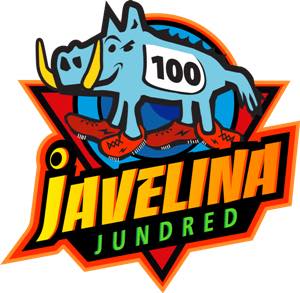
Training
At the end of June I needed to make plans for a qualifying race for Western States. I intended to enter the Ultra Trail Mexico 100km race in Huasca—the same race I signed up for last year but didn’t end up running due to a surgical procedure I had prior to the race (not running related). Yet when I went to enter the race it was already full. Now I was a bit panicked since I needed to have enough time to train for a race. The only time frame that seemed reasonable was October since the first week of November was the cutoff for all qualifying races for Western states. As I scoured the list of approved races, I didn’t see many options that were feasible in terms of cost of travel, distance from home, and time frame. I planned on running a 100km race since I only had 3 months to train but the only one that really seemed to fit was the Javelina Jundred in Fountain Hills, Arizona. Fear set in because 3 months or more accurately 14 to 15 weeks of training did not seem like it was sufficient to prepare for a 100 miler. I took the plunge thinking that even under trained, I only needed to finish the race within 30 hours. Considering I finished the Keys 100 in 20:28, I could walk a good portion of this race and still finish in time.

3am and ready to go.
My running had been pretty focused from January through May but as May finished and June rolled around, travel and life events started eating into my regular training. To prepare for this race, I looked at my training log for the Keys 100 and set up a detailed plan that steadily ramped up my weekly distance as well as my long runs. The plan focused on three 4 week training blocks that would ramp up for 3 weeks and decline in the 4th week.

Waiting for the start.
Everything went to plan for the first three weeks until a fateful Sunday on July 16th. I was running 20km on a mainly flat trail in the mountains near my home but at 9.5km, the trail drops dramatically by around 100m. I descended just fine, turned around at the 10km mark, and ascended back up the incline. Just as I was reaching the top of the hill I felt a sharp pain in a straight line up my left medial gastrocnemius muscle (inner upper calf). As soon as it happened I knew something was seriously wrong. I had never had such acute pain while running before. The issue now was that I was 10km from my car in a remote part of this forest mountain trail. I figured out a way to use a modified stride to run back but I had to be very careful not to put too much pressure on my left calf. When I got back to the house, the pain did not subside and just touching the muscle hurt tremendously.

Anyone see a squirrel?
The next morning I needed to travel for work. Luckily I was traveling to Merida, Mexico a city where I used to live. I contacted the physiotherapist I knew and the clinic was able to see me that day. They examined me and immediately recommended I get an MRI. Being the obsessed person I am, I had investigated throughout the day on Monday and had a hunch that I had a grade 1 or 2 tear of my medial gastrocnemius—most likely a grade 2. My MRI revealed that I did have a grade 2 tear which meant I couldn’t run for 4-6 weeks. I was very worried now. How the heck was I supposed to prepare for a 100 miler on a condensed schedule already that will now cut another 4-6 weeks of running?

One of the many posters Karina made.
After some contemplation, I decided I couldn’t fight reality and would concentrate on what I could control. I did some research on power/speed walking, read some articles, and watched some YouTube videos. My decision, after verifying with the physiotherapist, was to practice power walking during the weeks without running. When I got back to Mexico City and met with an orthopedic doctor, she confirmed no running for 6 weeks and I had to go to 3 sessions per week for those 6 weeks of rehabilitation. Quite a setback indeed but I was determined to follow the doctor’s instructions and not screw things up by rushing back.

Staying focused.
Over the next 6 weeks, I never missed a rehabilitation session, did my stretching and prescribed exercises at home, and power walked 5-6 days per week. I ended up walking 70-90 km per week during this time. A funny thing happened as I continued to walk so much, my efficiency steadily improved to the point that I was able to walk at a speed equal to a slow run/jog. This made me happy because I felt like in a serendipitous way, I gained a new skill set that could help me tremendously in a 100 mile ultra—the ability to walk much faster than most. I remember at the Keys 100, my walking was a key to my success because I passed many other runners late who were also walking but much slower. Beyond that, I knew it was good to focus on the positive and not dwell on the things that I couldn’t control.
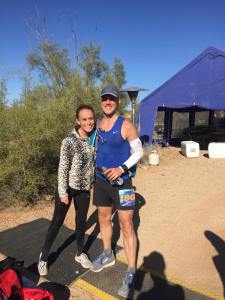
Best crew ever.
Come September, I was given the green light to do 30 minutes of running to test out the calf. The first test run was a bit scary and it felt weird running again because I had a lot of trepidation that the injury would return. Luckily it did not. I reported back to the clinic that all went well and I proceeded over the next two weeks to transition from the majority of the time power walking to the majority of the time running. As a result of this injury, I did alter my my stride slightly on uphills. Normally when I ran uphill my heels wouldn’t touch the ground but now I went slower allowing my heels to completely touch the ground to reduce pressure on my calves.

A little hot out there.
As a side note, I tried to figure out how I injured myself. The best I can gather is that in early June I went out for a 30km run and woke up the next day with pain in the back of my knee. It seems the pain was a case of tendinitis on the tendon that attaches to the top of the calf muscle I injured. I thought it healed because I monitored it closely and after 4 weeks it seemed to have gone away. However, the day before I injured myself, I did a hard run in the mountains—3.5 hours with tons of elevation gain. The next day when I went out for the the 20km run where I injured myself I noticed the tendinitis pain return a bit. I suppose that I needed more rest after that hard mountain run and my calf was simply too tight. When I went up the hill the calf just gave out and tore.

Karina with some Tarahumara.
During September I modified my training plan to reduce my weekly distance (100-120km per week vice 130-160km as previously planned). I had a handful of 3-5 hour runs programmed with one huge training run of 74km to give me a feel of where my fitness was for the 100 miler. All the running went well leading up to the race. I made sure not to push too hard. The first long run of 3 hours was humbling because I hit the wall only after 2 hours and slogged the last hour. Yet as the weeks progressed I noticed my strength returning. I did my 74km run 5 weeks out from the Javelina Jundred to give myself enough time to fully recover. That run went quite well which gave me confidence that I’d at least be able to run a good portion of the 100 miler. I didn’t start tapering quite as early like I did for the the Keys 100. Instead I ran my full training load until two weeks before the race. The week before the race, I reduced the distance by 20%. The week of the race I did runs of 9, 8, and 5km. I had two reasons for not doing a 3-4 week taper. First, I couldn’t afford to back off since I already lost 6 weeks of running. Second, I felt like the taper period lasted too long the first time and that it really wasn’t necessary to back off so much.

Where’d that magic potion go?
Another side effect from the injury was to reset my race expectations. Originally I wanted to beat my 20:28 time making a sub 20 my A goal. My B goal was sub 24. My C goal was to simply finish under 30 to make sure I qualified for the Western States lottery.

Keeping the eye on the prize.
Race Preparation
I am a detailed oriented person. In preparation for my first 100 miler I made spreadsheet that was a checklist of all supplies, gear, activities, and race day things I needed to do. I modified it a bit based upon things I had learned in the subsequent two years but it was more or less the same. That definitely made packing and prep much easier. I also made timing sheets — one small one that I’d carry with me during the race to help me know what I needed to do at various sections of the race and one double sided chart to give to my wife as my crew with my plan A and plan B so she’d have an idea where and when I’d be throughout the race. I’m not quite sure why, but as I made these timing sheets, I decided to alter my plan A to shoot for an 18 hour race and plan B for a 19 hour race. As I’m writing this report now, I don’t really know what possessed me to not only forget about my post injury revised plan A/B but shoot for even better times than my pre injury plan A/B. I simply told my wife that I may as well shoot for the stars and give myself a huge challenge rather than just sit back and semi-give up before the race even started. It’s crazy, I know, since I never had come close to an 18 hour pace in such long distances.
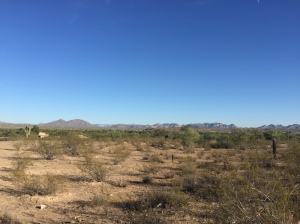
Arizona desert.
Pre Race Days
We arrived to Phoenix on Thursday with the race start on Saturday. As we went to pick up our luggage at the airport, I turned to my wife and said, “Now’s the moment of truth” referring to our suitcases. As I grabbed our first suitcase I glanced at my phone that had a message stating 1 of 2 suitcases arrived. OH NO! The other suitcase was still in Los Angeles and that, of course, was my suitcase with all my gear, supplies, clothes, etc. I was not a happy camper. We proceeded to make our claim and then pray to the Aztec gods that it would show up that night at the hotel. Otherwise Friday would be a crazy day of running around Phoenix trying to buy everything I needed.

The famous saguaro cactus.
When I awoke Friday morning, I immediately went to the front desk of the hotel and luckily the suitcase arrived! Whew–now I could concentrate on getting checked into the race and relax the best I could. Once I started seeing other runners at the hotel, however, I started to have a bit of panic and feelings of not belonging. All the other runners seemed to be super fit, focused, and practically pros whereas I felt a bit like a fraud and out of place. This has happened to me at all 3 of the races I’ve been in. I think it’s partly due to the fact that I run 98% of the time by myself and partly due to the fact my self-image still has an ingrained concept of myself from 10 years ago when I was 70lbs/30kgs heavier and at my unhealthiest point in my life.

What else do I need?
My wife and I went to the race expo, picked up my bib and goodies. We browsed around, bought a few items, and stopped at the massage both. I figured this might be a good opportunity for me to calm my pre-race jitters. I bought a 15 minute massage for my wife and me. As soon as the lady started on my back/shoulders I could feel that I was extremely stressed out. This 15 minute massage changed everything for me. After it was over, I relaxed for the first time since arriving to Arizona and my mood calmed as well.
The rest of the day was filled with small preparation errands as well as simple light foods (veggies/fruits/tofu). That night we had dinner at the hotel and I tried to get to sleep as soon as possible (9pm). I set the alarm for 3am but with nerves I ended up waking up for a couple bathroom breaks and by 2:15am, I was up for good.

Got to stay positive
Race Day
I got all my gear on and packed up the supplies. I drank a simple vegetable protein shake with some turmeric as well as a chia gel for some calories to start the day. I’ve found in the past that I do not want a lot of food in my stomach from the day before nor from breakfast. I train week after week with a pretty empty stomach so my strategy is to do the same thing as in my training and consume the calories I need while running. I had one cup of coffee and tried to do all the bathroom business I could to avoid any “issues” while in the race. Right before leaving the hotel I took some Imodium to ensure I wouldn’t be looking for a nearby cactus due to intestinal issues.
Once we arrived to the starting area around 5am, we staged my two drop bags–one at the start and one that would be at the halfway point of the loop at the aid station named Jackass Junction. We went over the race plan one more time, took some pictures, said some jokes, and awaited the start. In comparison to the Keys 100, I was surprisingly calm with barely any nerves at all. In fact, I was really ready to get the show on the road. I ran a quick loop around the start area about 15 minutes before the start to loosen the legs up. After that I stood near the start line to try to avoid being caught behind hundreds of runners in the beginning of the race. I read that the first 1-2km of the trail are pretty narrow and if you are in the middle to back the pace will be practically walking. I did not want that to happen because I had a different strategy to go out faster than my first 100 miler where I held back quite a bit.
The Race
At 6am 535 runners departed from the start chute. The beginning area wraps around the camp sites, main aid station, and eventually spits you out on the actual trail. I think I was in the group of the first 40 people. In my first 100 miler, I used my heart rate as my limiter as to how fast I would run. I tried to keep it in the 140s and due to that fact I ran at a pace that was quite a bit slower than I wanted. In this race and because of the experience I have gained over the two years since, I decided to pay attention to my heart rate but also use my perceived exertion and my breathing rate to dictate how fast I would go. I figured that I could sustain long stretches keeping my heart rate in the 150s. After about 2-3km, the group of runners started opening up and the trail had a lot more space. I took this opportunity to pick up the pace.

Keep on keepin’ on.
Another side note: My strategy was to break the race up into quarters or 40km each. In each quarter of the race, I had an average pace goal. Each 40km would progressively slow so I built that into my pacing goals. The course itself is a loop which we repeat 5 times with the first loop having a slightly longer extra part built in. Loop one is 35.9km/22.3mi and loops two through five are 31.3km/19.45mi. It has a total elevation gain of 2409m/7900ft. You essentially are on an aggregate incline to the far point of the loop and downhill coming back to the front. The tricky part is that some of the inclines are imperceivable but you notice your pace reducing. After each loop you reverse course and go back the way you came. It’s an interesting feature of the race because your are constantly passing other runners making it more social than a point to point ultra and by reversing course you are seeing everything from the opposite point of view. That helps you from getting bored and feeling like you are just doing the same thing over and over again.
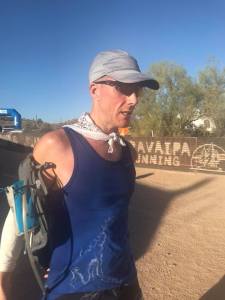
It was roasting
Back to the race: Arriving at the first aid station “Coyote Camp” I was keeping the pace that I needed. I filled my two water bottles and got out in under 2 minutes. I used a hydration vest for storing my supplies but decided I was going to try to avoid using the water bladder unless I really needed to. I thought that with my two water bottles which held a ½ liter each, that it would be enough for me to get to each aid station. That strategy turned out to be correct. The reason I didn’t want to fill the hydration vest with water is that it adds another 5-6lbs of weight. Over 100 miles that would require a significant increase in energy expenditure.
The next section from Coyote Camp to Jackass Junction is the longest segment between aid stations 10.4km/6.5mi. It’s also the roughest section with several very rocky portions where you definitely have to watch your step or else you’ll take spill. In fact I heard of one older runner who had a serious fall in that section and had to be taken to a hospital. As I navigated this section my pace picked up a little more. I had good conversation with another runner who ended up finishing 8th in the race. He ran an amazingly well paced race.
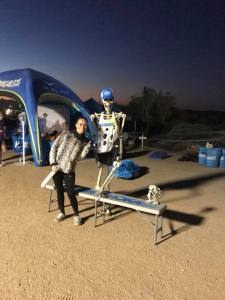
I hoped I wouldn’t turn into that guy.
As I arrived to Jackass Junction, I filled water bottles again, grabbed some food from my drop bag and was off again. Crossing the timing mat, I was 35th. On the back half the loop and with the downhills ahead, I pushed the pace some more and was running at clips of 5:10min/km to 4:55min/km. It felt good to run at that pace. I had slight worries that maybe it was too much but I quickly eliminated those thoughts and reminded myself that this race was a perfect opportunity to experiment and find out what I could do. I didn’t want to feel like I was too conservative after finishing this race. As we made our way down to Rattlesnake Ranch, I had passed several other runners. I got in and out quickly and set off for the the end of loop one. At this point, the sun had got to a point in the sky where the temperatures were starting to rise significantly.
I really wasn’t too concerned about the heat since I had run extremely hot and humid race before, I had lived in a very hot tropical environment for two years, and I really don’t mind the heat. Plus in this part of the country, there was absolutely no humidity. That would help to cool the skin since the sweat would evaporate vice just stay on your skin. I wore a singlet along with white arm sleeves.
As I arrived to the start/finish area, I surprised my wife since I was there 18 minutes prior to my predicted time for my A goal (3:18 total time). I handed all my gear to her so she could refill my water and supplies while I ran to the timing mat. I got back to the aid station area where my wife was and she was so happy for me. She showed me one of the great motivational posters she designed, gave me a big hug, took some pictures with me and sent me on my way.
Going out on loop 2 back to Rattlesnake Ranch, I quickly realized that my wife didn’t see the other water bottle I had tucked in a front pocket of my vest. My fault completely for not showing her where it was. The good news was that the aid station was closer this time since loop 2 had a shorter total distance. Ultimately I ran out of water with less than 10 minutes to the aid station so no big deal indeed.
The slight uphill to the back of the course was a lot more difficult this time now that I had run over 40km. Leaving out of Jackass Junction I had the long section with lots of rocks and wouldn’t you know it, I was checking my watch for something and BOOM–down goes Avery. I caught the bulk of my fall with the palms of my hand but I also fell to the left hitting my hip and back. I got up dusted myself off, checked for any serious injury or dropped supplies. Besides some cuts on my hand and elbow I was good to go. From there on out I was much more careful with my steps knowing that the later in the race it got, the harder it is to lift your feet.
I finished loop 2 in 3:16 for a total time of 6:34. I had also PRd my 50k time in a race by quite a lot with a 4:50 time. Things were looking very positive so far.

Loop 3 was the repeat of Loop 1 minus the longer final quarter. This time it was much hotter reaching the high temperature of the low 90s F or 32-34 C. As I was ascending the hills towards the back of the loop my speed started dropping markedly. I ran with for a while and was passed by the overall female winner of the race Larisa Dannis. Closer to Jackass Junction the same thing happened to me with the 2nd overall female finisher Dana Anderson. Both of these ladies were so positive and encouraging. They were incredible in their consistent pacing. As I was fading a bit, they kept on going. It reminded me of the old Energizer Bunny commercials in the 80s where they were the Energizer batteries and I was the off-brand battery. Passing through Jackass Junction and using the aggregate downhill helped instill a little more confidence after a little less than 2 hours of a fading pace.
The total time for loop 3 was 3:44 which meant I ran 27 minutes slower than loop 2. I had lost all the extra time I banked early in the race and was slightly behind my A goal now. Starting loop 4 meant Karina, my super wife, crew, cheering section, and overall hero, was going to run with me to the first aid station at Rattlesnake Ranch. As we headed out, I noticed I was in some definite trouble in terms of flexibility and pain in my legs. I had a very hard time opening up my stride and there was some mounting pain near my kneecaps. The best I could figure was that my quads were tightening up severely. I also had a little bit of pain in my hip to groin area when I had to take any steeper inclined steps with my right leg. Karina pulled out every trick in the book to cheer me up–from jokes, to videos from my daughters, to even tickling me, she was a real trooper. We arrived to the aid station and I knew I was hosed for my A goal and I let her know. My pace couldn’t even reach anything faster than 7min/km and according to my pacing charts, I needed to run around a 6:30min/km. The problem was that I simply couldn’t muster any quicker turnover in my feet nor the strength to move faster. I felt like I was stuck in first gear. This happened to me in the second half of the Keys 100 when all I could do was alternate running and walking until I reached the end. The upshot of this day was that I was strong enough to barely have to walk.
When I reached Jackass junction for the 4th time, I was feeling a bit sorry for myself, dejected, and slightly disoriented. The fatigue from the day really sunk in, the disappointment of fading so quickly from my A and possibly B goal was bothering me, and I just wanted to run faster. I got out of there and headed back down the trail through the rocky section once more. At this point it was dark and I was using my waist lamp. I definitely was very careful not to eat it again on the rocks. Because this was a washing-machine style race I was passing runners going the other way, going my way, and being passed as well. I could tell for the most part who was who but the closer I got back to the start/finish line, the less accurate my assumptions were. It felt as if I faded very far back in the race. At 8:34pm I arrived at the start/finish line for the 4th time. It took me 4:15 to complete that loop and 32 minutes more than loop 3. I was not happy.

Now was the time of reckoning. Karina was about to run another segment with me after she did all the crewing and aid station work I needed. She could see I was in distress and offered me some ibuprofen for the second time. I didn’t mention it earlier in this report but prior to lap 4 she offered me some but I generally avoid all pain medication, especially when running/racing. She had been spending time with the crew and wife of another runner I met. Apparently the wife of this runner had a medical background and explained that I was having quite a bit of inflammation and that a single dose of ibuprofen was not going to cause the damage I was so worried about. I had heard many horror stories of runners with kidney failure in races because of ibuprofen and I did not want that to happen to me. However, as a good runner should do, I listened to my crew since she was much more sane and capable of thinking than I was. I consumed the ibuprofen with some water and we were off.
Wouldn’t you know that after about 20 minutes of running, I started feeling better. I felt a little lighter on my feet, I was cracking jokes, smiling, and just felt like things were improving. We rolled into Coyote Camp and Christmas music was playing. It was awesome. I grabbed some supplies, kissed my lovely wife goodbye and headed off into the wilderness feeling renewed. For the first time I decided to listen to some music to distract me. Using DJ mixes I had, I queued one up that really made me feel good in the past and the next thing I know I’m singing out loud as I went up the gradual hill to the back half of the loop. As the kilometers clicked off, my speed kept increasing. The only glitch I hit was when my waist lamp was losing juice. I didn’t realize that it only had around a 4-5 hour battery life at full power. The tricky part was that in order to change batteries I had to remove the other one. It had a screw cap but with a tricky pin insert you had to align with the lamp tube. Once I turned off the lamp it was quite dark. I slid the battery into the tube and tried to screw the cap back on but it wouldn’t turn on. UGH! No panicking yet…What to do?? Using my logic, I figured that if I tilted the tube forward putting the small hole, where the pin was to align, closest to the ground, I could use gravity to help align the pin in the cap. I took a deep breath, screwed it on, hit power and voila–LET THERE BE LIGHT!
I hit Jackass Junction just as happy as could be. I encouraged several runners sitting there to keep pushing. I was giving pats on the backs and high fives. What was going on with me I thought? I couldn’t stop smiling. Grabbing my final supplies out of my drop bag, I passed the timing belt and headed down the back half of the trail for the final time.
Now things were really getting fun. I felt a certain momentum building from within. Little by little I continued to push the pace. I passed several runners who were in front of me but were reduced to walking. I understood exactly what they were going through from being there myself in other races but for some reason it wasn’t me in this race. They call this reeling people in and passing the carnage. Rattlesnake Ranch was visible in the distance but the trail was quite winding so it took longer to get there than the crow flies.
I stayed barely a minute at the aid station only filling up on water. Looking back, I still had a full bottle of water in my vest so I didn’t need to stop there at all. It was only 6.5km to the finish line. Now is where I wanted to drop the hammer as the elites say. I upped my pace as best I could and I felt like I was flying. I continued to pass people coming and going and rarely saw anybody running. After about 15-20 minutes I could see the glow of the lights of the finish line. I could smell the end of the race. I also looked over a large hill and saw the moon was still up. Prior to the race, I told my wife that I would race the moon meaning I wanted to finish before the moon set (around 1am I think). I called it my quest to Chase the Moon. In my happiness of the moment I had a conversation with that moon to explain who won the race between him and me. Mind you I was actually talking out loud…but who cares…I do some strange things late in races to entertain myself.

Finally I approached the start/finish camp. The first thing I did was look for me wife. She was nowhere to be found so I tried my best to sprint around the chute leading up to the finish line. I was passing people all over the place and probably looked like a lunatic running so hard. Yet a funny thing happened, it seemed to charge up the crowd and everyone was cheering loud for me. Then I did what I dreamed for months, I crossed the finish line—at 12:12am! Final time 18 hours and 12 minutes. The final lap took me 3:37 meaning I ran it 38 minutes faster than loop 4 and 6 minutes faster than loop 3. Amazing! I had no idea I had that capability inside of me. It surprised me more than anyone.
I left the finish area and headed back to where my drop bag was–still no wife. Looking towards the trailhead area, I spotted her waiting at the gates with the crowd looking for me to come in. We apparently missed each other as I came around the chute. She went from the finish line to the trailhead as I went through the chute to the finish line. After hugs and kisses, we headed to the finish line again to take pictures together to capture the happy moment forever.
Looking back on this race makes me very happy. I learned that I now have the capacity to run almost all of a 100 miler and have the ability after 90 miles to pick up my pace to levels I ran in miles 20-40. Listening to your crew is an important lesson as well. In my mind I hit my A goal and 18:12 for 100 miles for a guy who 10 years ago couldn’t run a mile and was extremely overweight is something I’m very proud of. I think 5 or 6 of the top finishers are pro runners and 12th place among 535 starters is not too shabby.

Done and done!
The other interesting thing about this whole adventure was the fact that I had to take 6 weeks off from running in the middle of my training. I returned to running with less than 8 weeks until the race. I’m still trying to distill what that meant. The best I can guess is that the power-walking helped my base fitness, the lower volume weeks kept me from overtraining, and when I came back from running I was very focused on trying to maximize my training days while making sure to build in true rest days around my long training runs.
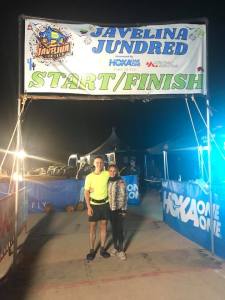
We did it!
So that’s my long winded report…for those that stuck with it until the end, you have a taste of the patience it takes to run an ultra. I want to give a big thanks to Justin and Candice for giving my wife a slice of your popup tent during the race. Another big thanks goes to my family for putting up with my craziness and for supporting me. My friends were very encouraging leading up to and during the race. The race director, staff, and volunteers were awesome. Yet the biggest thanks has to go to my wife, crew, running mate, best friend, and superhero Karina. None of this ever happens without her. She has a special gift of bringing the best out of me despite my crazy ways and stubbornness.

Sub 24 hour buckle.
Lap 1 – 35.9km/22.3mi – 3:18 – 5:33min/km – 24th place
Lap 2 – 31.3km/19.45mi – 3:18 – 6:17min/km – 23rd place
Lap 3 – 31.3km/19.45mi – 3:43 – 7:09min/km – 19th place
Lap 4 – 31.3km/19.45mi – 4:15 – 8:11min/km – 18th place
Lap 5 – 31.3km/19.45mi – 3:37 – 6:58min/km – 12th place
Total – 161.1km/100.1mi – 18:12 – 6:47min/km 10:55min/mi – 12th place
Race Accomplishments:
100 mile PR – 18:12
100 km PR – 10:48
50 mi PR – 8:23
50 km PR – 4:47


